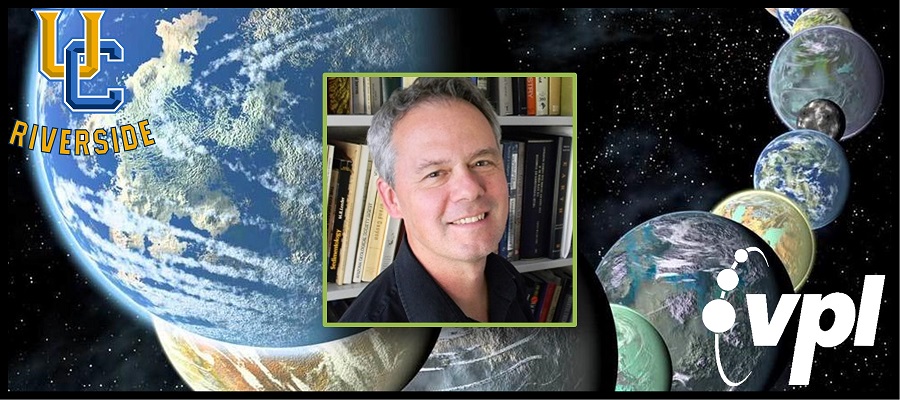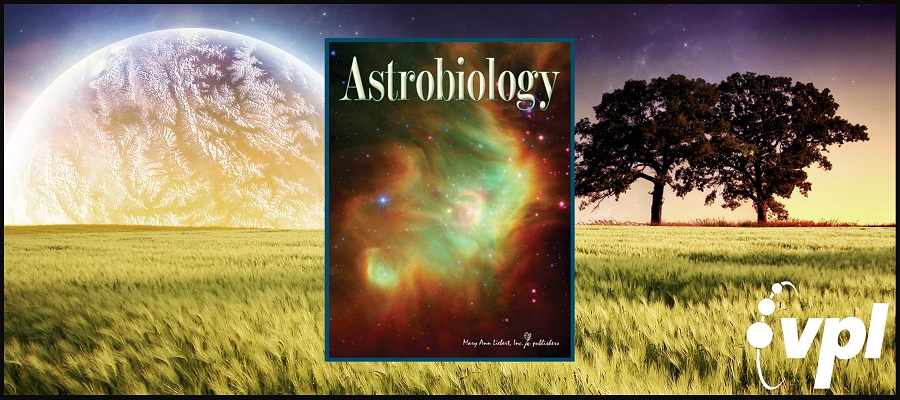VPL Postdoctoral Researcher, Andrew Lincowski (University of Washington), and VPL project PI, Victoria Meadows (University of Washington), published two new…
The observation of a 266.94 GHz feature in the Venus spectrum has been attributed to phosphine (PH3) in the Venus clouds, suggesting unexpected geological, chemical, or even biological processes. Since both PH3 and sulfur dioxide (SO2) are spectrally active near 266.94 GHz, the contribution to this line from SO2 must be determined before it can be attributed, in whole or part, to PH3. An undetected SO2 reference line, interpreted as an unexpectedly low SO2 abundance, suggested that the 266.94 GHz feature could be attributed primarily to PH3. However, the low SO2 and the inference that PH3 was in the cloud deck posed an apparent contradiction. Here we use a radiative transfer model to analyze the PH3 discovery, and explore the detectability of different vertical distributions of PH3 and SO2. We find that the 266.94 GHz line does not originate in the clouds, but above 80 km in the Venus mesosphere. This level of line formation is inconsistent with chemical modeling that assumes generation of PH3 in the Venus clouds. Given the extremely short chemical lifetime of PH3 in the Venus mesosphere, an implausibly high source flux would be needed to maintain the observed value of 20 ± 10 ppb. We find that typical Venus SO2 vertical distributions and abundances fit the JCMT 266.94 GHz feature, and the resulting SO2 reference line at 267.54 GHz would have remained undetectable in the ALMA data due to line dilution. We conclude that nominal mesospheric SO2 is a more plausible explanation for the JCMT and ALMA data than PH3.
The UCR-based Alternative Earth’s Team has received a five-year funding award from the Interdisciplinary Consortium for Astrobiology Research (ICAR). VPL…
Chirality is considered a universal, agnostic biosignature that is independent of a planet’s biochemistry. Researchers have recently characterized the chiral…
Photosynthesis is an ancient metabolic process that began on early Earth and offers plentiful energy to organisms that can utilize it such that that they achieve global significance. The potential exists for similar processes to operate on habitable exoplanets and result in observable biosignatures. Before the advent of oxygenic photosynthesis, the most primitive phototrophs, anoxygenic phototrophs, dominated surface environments on the planet. Here, we characterize surface polarization biosignatures associated with a diverse sample of anoxygenic phototrophs and cyanobacteria, examining both pure cultures and microbial communities from the natural environment. Polarimetry is a tool that can be used to measure the chiral signature of biomolecules. Chirality is considered a universal, agnostic biosignature that is independent of a planet’s biochemistry, receiving considerable interest as a target biosignature for life-detection missions. In contrast to preliminary indications from earlier work, we show that there is a diversity of distinctive circular polarization signatures, including the magnitude of the polarization, associated with the variety of chiral photosynthetic pigments and pigment complexes of anoxygenic and oxygenic phototrophs. We also show that the apparent death and release of pigments from one of the phototrophs is accompanied by an elevation of the reflectance polarization signal by an order of magnitude, which may be significant for remotely detectable environmental signatures. This work and others suggest that circular polarization signals up to ∼1% may occur, significantly stronger than previously anticipated circular polarization levels. We conclude that global surface polarization biosignatures may arise from anoxygenic and oxygenic phototrophs, which have dominated nearly 80% of the history of our rocky, inhabited planet.
A vast diversity of environments exists within and beyond Earth. To the extent life depends on and interacts materially with its environment, it can be expected that life-hosting potential among these environments varies as much as the physical and chemical properties that define them. To understand this potential demands that we first understand lifes requirements in some detail. Discussion of these requirements is frequently undertaken in considering habitability. Cockell et al. (2016) argue that the term habitability is inherently binary: An environment either can or cannot sustain life. This is an important starting point in evaluating the life-hosting potential of…
The ongoing searches for exoplanetary systems have revealed a wealth of planets with diverse physical properties. Planets even smaller than the Earth have already been detected, and the efforts of future missions are placed on the discovery, and perhaps characterization, of small rocky exoplanets within the habitable zone of their stars. Clearly what we know about our planet will be our guideline for the characterization of such planets. But the Earth has been inhabited for at least 3.8 Ga, and its appearance has changed with time. Here, we have studied the Earth during the Archean eon, 3.0 Ga ago. At that time one of the more widespread life forms on the planet were purple bacteria. These bacteria are photosynthetic microorganisms and can inhabit both aquatic and terrestrial environments. Here, we used a radiative transfer model to simulate the visible and near-IR radiation reflected by our planet, taking into account several scenarios regarding the possible distribution of purple bacteria over continents and oceans. We find that purple bacteria have a reflectance spectrum which has a strong reflectivity increase, similar to the red edge of leafy plants, although shifted redwards. This feature produces a detectable signal in the disk-averaged spectra of our planet, depending on cloud amount and on purple bacteria concentration/distribution. We conclude that by using multi-color photometric observations, it is possible to distinguish between an Archean Earth in which purple bacteria inhabit vast extensions of the planet, and a present-day Earth with continents covered by deserts, vegetation or microbial mats.


